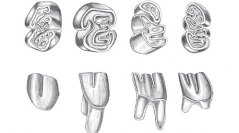

 Geodiversitas
32 (2) - Pages 307-329
Geodiversitas
32 (2) - Pages 307-329The present paper gives a systematic study of rodent and lagomorph remains together with the list of terrestrial molluscs recovered in the localities FT 3/8 and FT 3/10. Miocene nonmarine deposits and fossils had been known from the beginning of the 20th century in the surroundings of the village Felsötárkány, close to the town of Eger. An intensive sampling campaign was initiated by the first author in 2000. The collection was taken by screen-washing. Up to the present seven localities were studied. Among them, Felsötárkány 3/8 and 3/10 occur in the highest lithostratigraphic position. The faunas of FT 3/8 and 3/10 are unusual due to the association of Vallesian rodents (e.g., Myoxus vallesiensis, Microtocricetus molassicus, Megacricetodon minutus) and Sarmatian molluscs (e.g., Perforatella punctigera, Pirenella picta nympha). The coexistence of Collimys and Microtocricetus is rare among the European Early Vallesian faunas. Another special character of the fauna FT 3/10 is the high frequency (53%) of Collimys. The biostratigraphic comparisons suggest that the age of the studied faunas cannot be younger than the A-B mollusc zones of the Vienna Basin (Fig. 11; Papp 1951) and fits with the lower part of MN 9 or perhaps the uppermost MN 7/8. This late Sarmatian-Early Pannonian period is imperfectly documented in the Central European Neogene.
Mammalia, Rodentia, Lagomorpha, terrestrial molluscs, Miocene, biostratigraphy, Hungary